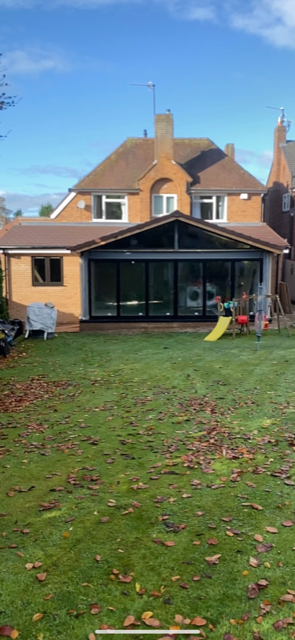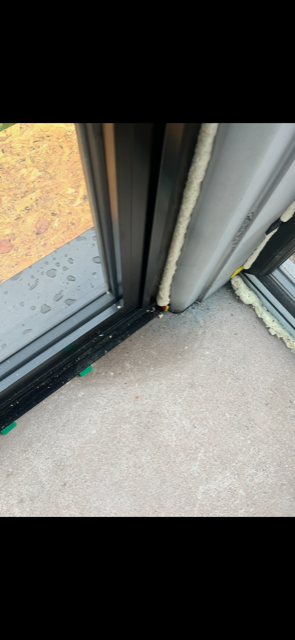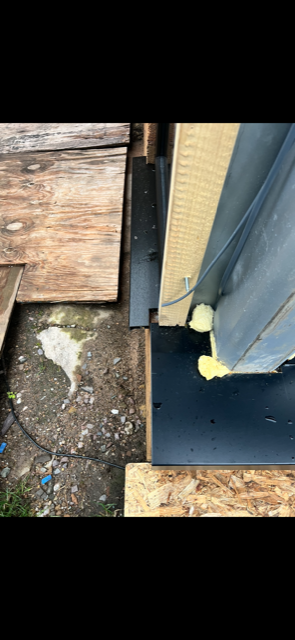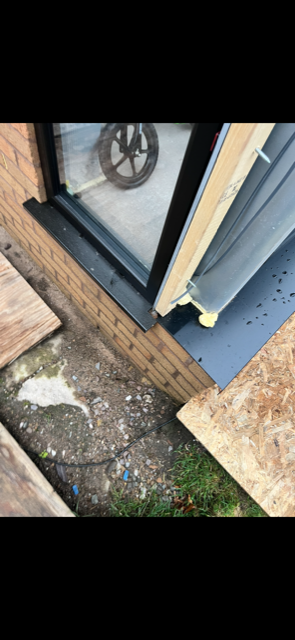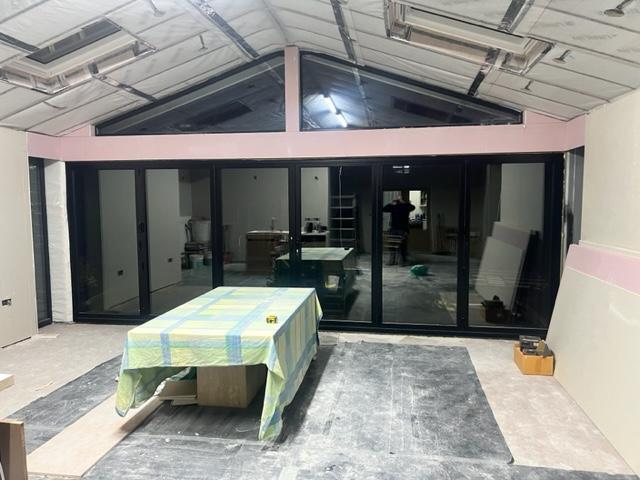
GasManDan
Members-
Posts
11 -
Joined
-
Last visited
Recent Profile Visitors
The recent visitors block is disabled and is not being shown to other users.
GasManDan's Achievements

Member (3/5)
0
Reputation
-
Steel beam thermal bridging problem
GasManDan replied to GasManDan's topic in General Construction Issues
Thanks for your reply @JohnMo; yes you are correct with regards to the fixing of the doors and windows. I went back to our architect with this question and it is an issue that seems to be overlooked by everyone including myself but then on the flip side felt that by fastening a heavy door direct to the steel was a more secure option. Im now thinking to wrap some 10mm aerogel cold bridge strips and seal to all external steel faces and then also fit PIR over the top of this and then seal and clad? Is there such thing as over insulating in this situation? internally I am more restricted space wise as we only have 40mm from the steel face to the window unit so here I am installing the 10mm aerogel and then was going to clad over the top of this? -
Steel beam thermal bridging problem
GasManDan replied to GasManDan's topic in General Construction Issues
That’s great thanks and appreciate your responses. has either of you looked into a closed cell spray foam in place of the PIR? Just thinking if the spray insulation is directly bonded to steel then maybe insulation values would be better? -
Evening all, I’m looking for some help and advice regarding insulating a steel goalpost structure in order to try to stop thermal bridging and bad moisture problems internally. We have just had the internals plastered and the plan originally was to clad the external steels with oak but have had to put that on hold temporarily due mostly to cost. my plan B is now to insulate the external steel as best as possible then possibly clad with aluminium. it’s the first winter we have had doors and windows in but the moisture on the steels internally is real bad. I’ve purchased some 10mm cold bridge strips from proctor group to cover steels internally and then was maybe thinking again to clad with aluminium as don’t think plasterboard would last with the amount of moisture. has anyone else been in this situation and can offer any further advice? thanks in advance for your help
-
Suspended to solid uneven floor advice
GasManDan replied to GasManDan's topic in General Construction Issues
Sorry I’m not that clear at times! yes basically, I want a flush floor throughout the downstairs but I guess the thing that is dictating this is the amount I will need to raise the solid floor in order to make it level!? To add another problem to the mix is that I want to install an UF heating system that will work with a combination of both an existing solid and suspended floor that are currently at the same level? -
After a bit of advice if poss please folks; currently undergoing a complete downstairs remodel before we start the rear extension. We have cut in a new doorway into what will be the utility and downstairs bathroom. In the new utility I have had to break through the concrete slab to pick up & tee into the soil stack. I’ve back filled the holes today in prep to fill back up with cement. The floor in this room Is approx 40mm out in the middle so was planning to put some self levelling screed down. The now hallway that leads into the utility is suspended floor that is pretty much flush with the concrete slab. As I’m planning to put underfloor throughout the downstairs (seen that omnie do quite a good design) by the time I’ve replaced the suspended floor boards with the t&g back boards and then the uf on top of the existing solid floor and screeded+floor covering, there is going to be a massive difference with height and this is what I’m trying to avoid! Any help or advice would be appreciated thanks
-
2 phase extension / remodel cost expectations
GasManDan replied to GasManDan's topic in Introduce Yourself
I’m not sure re the current extension as we have only lived there a few years and think the extension was built around 15yrs ago. We went through planning as changing the front & upstairs in phase 2. the bifolds will be almost 6.5mtrs.....I’ve attached a pic of the proposed new floor plan. as mentioned previously, the architect did plan for 15deg roof but when I chalked it out, felt we wasn’t gaining that much more to what we have now. I think the velux on the vaulted roof section should be ok hopefully but might need to do something with the one spanning out from the house. we currently have dreadnaught clay tiles on the house and ideally would like something similar if not the same but obviously I need to check they can cope with the 12.5 deg pitch -
Hi all, we are planning to have a rear pitched roof extension with centre vaulted ceiling & bifold doors. as I’ve never done this before, I’m trying to understand the steelworks; we already have 2 steels in the original house as a smaller flat roof extension has been added (which will be demolished and replaced by above) so our structural engineer has put the onus back on the builder to check they are adequate. At what point does the steel goalpost frame get built!? If we/the builder opts to do the traditional strip & fill footings, do the steels have to be set in these footings or is it a case of once they go off, build the steels off of them and then basically brick up around them? ive attaches a pic of the structural drawing as you can see a bit more detail of what we plan to do!
-
2 phase extension / remodel cost expectations
GasManDan replied to GasManDan's topic in Introduce Yourself
Thanks for the reply mate. The honest answer is I’m not sure regarding ground conditions; next door have recently done a flat roof rear extension and they used the traditional strip/trench fill foundations. It will be a solid concrete slab as is the current extension with the air bricks being sleeved through to the original suspended timber floor reference to door and window config; we are planning to have an 7 leaf bifold and 3 velux roof lights.....3 of the quotes we had didn’t include these! originally our architect spec’d a 15deg roof tile but we requested that it was changed to the min 12.5deg in order for us to be able to take it out a little further. -
2 phase extension / remodel cost expectations
GasManDan replied to GasManDan's topic in Introduce Yourself
All internals (plastering, flooring, tiling, electrics, gas etc) I plan to do myself-only thing I can’t do good is lay bricks. I don’t mind putting footings in but am a bit unsure about when/how to put the goal post steels in!? I live in the West Midlands. The budget of £30k is what I roughly guesstimated based on material costs etc. I appreciate there is some work involved in the steels etc but am more than willing to get stuck in and dig footings etc -
Good afternoon all, Newbie here - I stumbled across the website last night and have been looking on it since-lol I live in a 1950’s 3 bed detached house and have had an architect and structural engineer draw up plans for a 2 phase extension; the first being a rear single storey pitched roof with vaulted ceiling + bifold doors, and the second being upstairs above garage and double bay oak/oak clad (?) front bay. The plan is to start at downstairs internals then work our way up - phase 1 (downstairs) is the above mentioned rear (consisting of goal post style steels & 2 internal steels (8 in total)....n.b already have 2 steels in place in the house as it is as is already a flat roof extension!) the measurements of the new pitched roof extension is just over 12mtrs across & 5 mtrs out. I have had 5 quotes now for building the shell of the extension (up to sub floor & water tight-no internals) fitting 2 internal steels & building 1 internal wall.....not sure if I am being a bit delusional here but I was budgeting roughly 30k for this work but the quotes I’ve had back range from 52k up to 86k!! Does the 30k sound like I was being a bit apprehensive?? Because the quotes vary so much I now have no idea as to what is a sensible quote! Just to confirm; the biggest steel in phase 1 is 203x102x19kg Thabks in advance for your help and feedback

